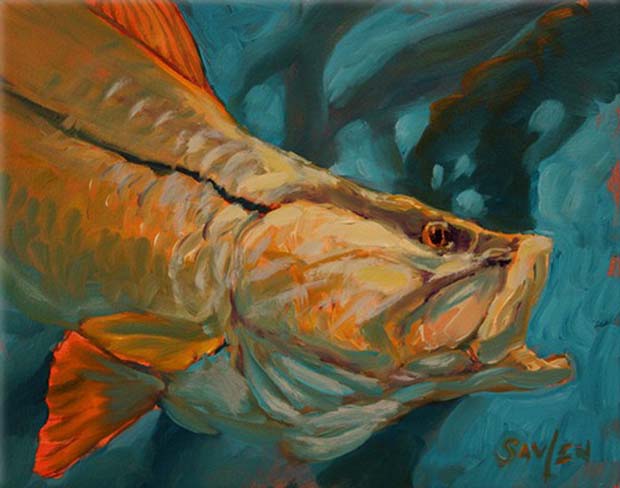Executive Summary from Florida Fish and Wildlife Conservation Commission on Snook
[dropcap]T[/dropcap]his assessment update includes data through 2012, albeit the 2012 data are preliminary.
Because of a severe cold spell in January 2010, the snook fishery remained closed by executive order until 31 August 2010. The fishery briefly opened on 1 September 2010 but was closed again by executive order on 17 September 2010 until 31 August 2011. The fishery on the Atlantic coast opened 1 September 2011 but the fishery on gulf coast has remained closed to harvest; however, the executive order keeping the fishery closed expires 31 August 2013.
In 2012, based on recreational interviews with anglers who indicated the type of fish that they were targeting, snook dropped to the tenth most targeted species on both coasts (down from fifth place in 2009 on the Atlantic coast and from third place in 2009 on the gulf coast).
As in previous assessments, total catch rates for MRFSS-MRIP and Everglades National Park creel data were calculated with generalized linear models. The variables that significantly reduced the deviance in the estimated catch rates included: for MRFSS-MRIP,-year, two-month wave, time fished, fishing mode, and fisher avidity and for the Everglades National Park creel survey, catch rates the variables were year, month, time fished, and area fished.
On the Atlantic coast, recreational total-catch rates were flat from 1996 through 2009 then dropped in 2010 and 2011 and a slight increase in 2012 while the catch rates on the gulf coast were generally increasing until the drop after the 2005 red tide event then again the rates were increasing until a severe drop in 2010 and modest increases after.
Total catch rates from the Everglades National Park creel survey, which were applied to the gulf coast analyses, showed similar increases in recent years as did the recreational index for the gulf coast and catch rates in the park also experienced the sharp drop in 2010 followed by increases afterwards.
The fishery-independent haul seine catch rates in numbers of snook per set provided by the FWC’s Fishery Independent Monitoring program on the Atlantic coast decreased from 1997 to 2001 and then were stable until the drop in-2010, afterwards the catch rates increased slightly while catch rates on the gulf coast from 1996 to 2008 were mostly stable and then dropped in 2009 and 2010 to the lowest catch rate in the series. The gulf catch rates on the gulf increased after 2010. We used length data by coast for age-2 fish from the fishery independent samples to identify age-2 fish in the seine hauls and then repeated the standardization process to generate indices just for age-2 fish by coast. The patterns in age-2 fish resembled the adult catch rates.
The sizes of fish that anglers released were estimated from angler interviews, logbooks, the Snook and Gamefish Foundation’s Angler Action Program, and a fishery independent catch-and-release fishing program. Data from the first three programs were available beginning in 2002 and the Angler Action Program beginning in 2010. The fishery independent catch and release fishing program operated from 2002 through 2005. We used the average lengths from 2002-2005 by coast to assign lengths to the released fish in the years 1999 to 2002 and fish less than 24 in TL for the earlier years.
As with the 2012 assessment, we used the National Marine Fisheries Service’s Age-Structured Assessment Program (ASAP) because ASAP is more flexible than the previously used Integrated Catch-at-Age model especially in terms of numbers of indices, years with age data for estimating selectivity, linking discards to their fisheries, differential weighting of population parameters, and other technical details.
Fishing mortality rates on the Atlantic coast tracked those estimated in earlier assessments until 1998 and then the rates were higher for 1999-2003 and then similar from 2004 and later. After the extended season closure, from January 2010 until September 2011 on the Atlantic coast, the estimate of average fishing mortality for reference age (age-8) was 0.49 per year in 2011 and 0.15 per year in 2012. On the gulf coast, the fishing mortality rates declined after the slot limit was implemented in 1999 and the fishing mortality for the reference age (age-7) was 0.04 per year in 2010 which was down from the 1997 high value of 0.76 per year. The fishing mortality rate during the closure was 0.075 in 2011 and 0.066 per year in 2012. Most of the mortality on the gulf coast came from release mortality.
The estimated recruitment on the Atlantic coast in 2007 through 2011 was the lowest over the 27 year time period and recruitment on the gulf coast from 2005 through 2009 was the lowest since 1992. The low numbers of recruits on the gulf coast occurred at the highest spawning biomass values. Low recruitment stemming from high spawning biomass indicates that environmental effects are important determinants of year class strength.
To read complete assessment update click here […]


